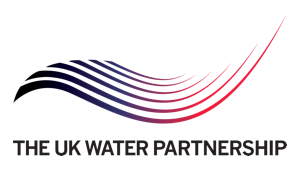The challenge
Water pollution from abandoned mine workings is a global problem: it is estimated that 19,300 km of rivers in the USA and 5,000 km of rivers in Europe are affected by acid rock drainage. Treatment requires the installation of specialist systems to reduce acidity, dissolved metals and suspended solids before waters can be released into the environment.
However, remediation schemes are expensive both to commission and operate, often costing millions of dollars a year. Moreover, because mine waters continue to be released into the environment long after mining operations have ceased, treatment operations need to be run in perpetuity. Cheaper, more effective systems are urgently required.
The solution
A new low energy mine water treatment plant that promises a 50% reduction in the electricity costs of treating mine water has been built and tested at an abandoned tin mine in Cornwall by Minus Engineering and the University of Exeter’s Camborne School of Mines .
NeutraSeal - the groundbreaking technology used in the new plant – can handle high volumes of water and remove a wide range of contaminants, including manganese and sulphate, which have the potential to contaminate drinking water supplies. The plant has a modular, scalable design that reduces capital costs by 30% compared with conventional systems. The technology harnesses a static head of water to lower pumping costs and introduces optimised neutralisation and aeration processes. The idea is similar to hydro-power but NeutraSeal is hydro-treatment and delivers treated water by-passing the energy generation stage.
The sealed nature of the system increases its reliability in extreme environments, and valuable metals can be recovered from suitable waters to provide a revenue stream. Dr Ben Williamson from Camborne School of Mines said: “Not only does this new water treatment technique offer lower operational costs because of reduced electricity use; it also offers lower initial capital costs. These cost savings, along with the opportunity to generate additional revenue from recovered metals, are sure to be of interest to the mining industry.” .
Click on images of the system
 |
| 
Resulting benefits
The capital cost of the NeutraSeal system is around 30% lower than conventional fixed structure systems, and it offers a 50% reduction in electricity costs. The system can treat a variety of water compositions and flow rates, and be adapted to remove specific contaminants (e.g. Mn and sulphate). Metals can be recovered from suitable waters to provide a revenue stream.
NeutraSeal is scalable, designed to treat flows of up to 2000 m3/hr. The process is modular and has a reduced footprint (typically 60% the size of conventional plants). The sealed nature of the system expands the range of operating geographies as reliability is increased in extremely cold environments and water loss during treatment is prevented in hot climates.
Future directions
Minus Engineering www.minus-eng.com and Camborne School of Mines are now looking for partners to help exploit the technology by region, initially in mining markets across Europe and South Africa where efficient water treatment is required.
No details provided.
Customer:

Sources of funding
Technology Science Board

Ben Williamson
Camborne School of Mines, University of Exeter
e: b.j.williamson@exeter.ac.uk
t: +44 (0)1326 371856









 The Water Security Knowledge Exchange Portal supports the objectives of the
The Water Security Knowledge Exchange Portal supports the objectives of the 